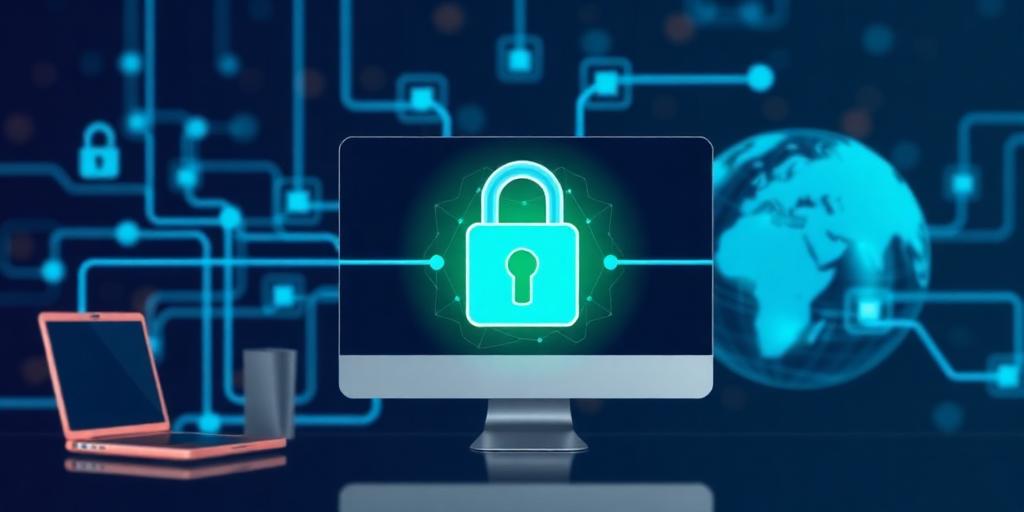Troubleshooting 101: Fixing Common VPN Connection Problems
A VPN, or Virtual Private Network, encrypts your internet traffic and routes it through a server in a location of your choosing. This provides enhanced security and privacy, but VPN connections aren't always seamless. This guide will walk you through troubleshooting common VPN connection issues.
1. Verify Your Internet Connection
- Problem: A VPN relies on a stable internet connection. If your internet is down or spotty, the VPN will struggle to connect.
- Solution:
- Ensure your Wi-Fi or ethernet connection is active.
- Try accessing a website without the VPN enabled to confirm internet connectivity.
- Restart your modem and router to refresh your connection.
2. Check Your VPN Credentials
- Problem: Incorrect username, password, or server address can prevent a VPN connection.
- Solution:
- Double-check the username and password you're using. VPN credentials may differ from your regular account logins.
- Verify the server address or hostname. Refer to your VPN provider's documentation for the correct settings.
3. Select a Different Server
- Problem: Sometimes, a specific VPN server might be overloaded or experiencing technical difficulties.
- Solution:
- Most VPN applications allow you to choose from a list of available servers. Try connecting to a different server location.
- Experiment with servers in different geographic regions.
4. Examine Your Firewall and Antivirus Settings
- Problem: Firewalls and antivirus software can sometimes interfere with VPN connections, blocking necessary ports or protocols.
- Solution:
- Temporarily disable your firewall or antivirus software to see if that resolves the issue (remember to re-enable them afterward).
- Configure your firewall or antivirus to allow VPN traffic. Consult their documentation for specific instructions; you might need to add exceptions for the VPN application or specific ports (e.g., UDP port 1194 for OpenVPN).
5. Restart Your VPN Client or Device
- Problem: Sometimes, the VPN application itself can encounter errors or glitches.
- Solution:
- Close the VPN application completely and restart it.
- If the problem persists, try restarting your computer, smartphone, or tablet.
6. Change VPN Protocols
- Problem: VPN protocols determine how your data is encrypted and transmitted. Some protocols are faster or more reliable than others.
- Solution:
- Most VPN clients allow you to select different protocols like OpenVPN, IKEv2, L2TP/IPsec, or WireGuard.
- Experiment with different protocols to see if one provides a more stable connection. OpenVPN (UDP) and WireGuard are often good choices.
7. Update Your VPN Client
- Problem: Using an outdated VPN client can lead to compatibility issues and connection problems.
- Solution:
- Ensure you're using the latest version of your VPN application. Check for updates in the app itself or on your VPN provider's website.
8. Check for IP Address or DNS Leaks
- Problem: Even when connected to a VPN, your real IP address or DNS requests might sometimes leak, compromising your privacy.
- Solution:
- Use a website like https://www.dnsleaktest.com/ to check for IP address or DNS leaks while connected to your VPN.
- If you detect leaks, ensure that your VPN client has leak protection enabled (often found in the settings).
9. Contact Your VPN Provider's Support
- Problem: If you've tried all the above steps and still can't connect, the issue might be on your VPN provider's end.
- Solution:
- Contact your VPN provider's customer support for assistance. They may be able to diagnose the problem or provide specific instructions.
10. Router Compatibility
- Problem: Some routers don't play nicely with VPN connections, causing dropped connections or slow speeds.
- Solution:
- Consider using a router that is known to be compatible with VPNs. Many routers support VPN client functionality, allowing you to configure the VPN directly on the router, protecting all devices on your network.
- Check your router's firmware is up to date.
By systematically troubleshooting these common VPN connection problems, you can usually resolve the issue and restore your secure and private internet access.









